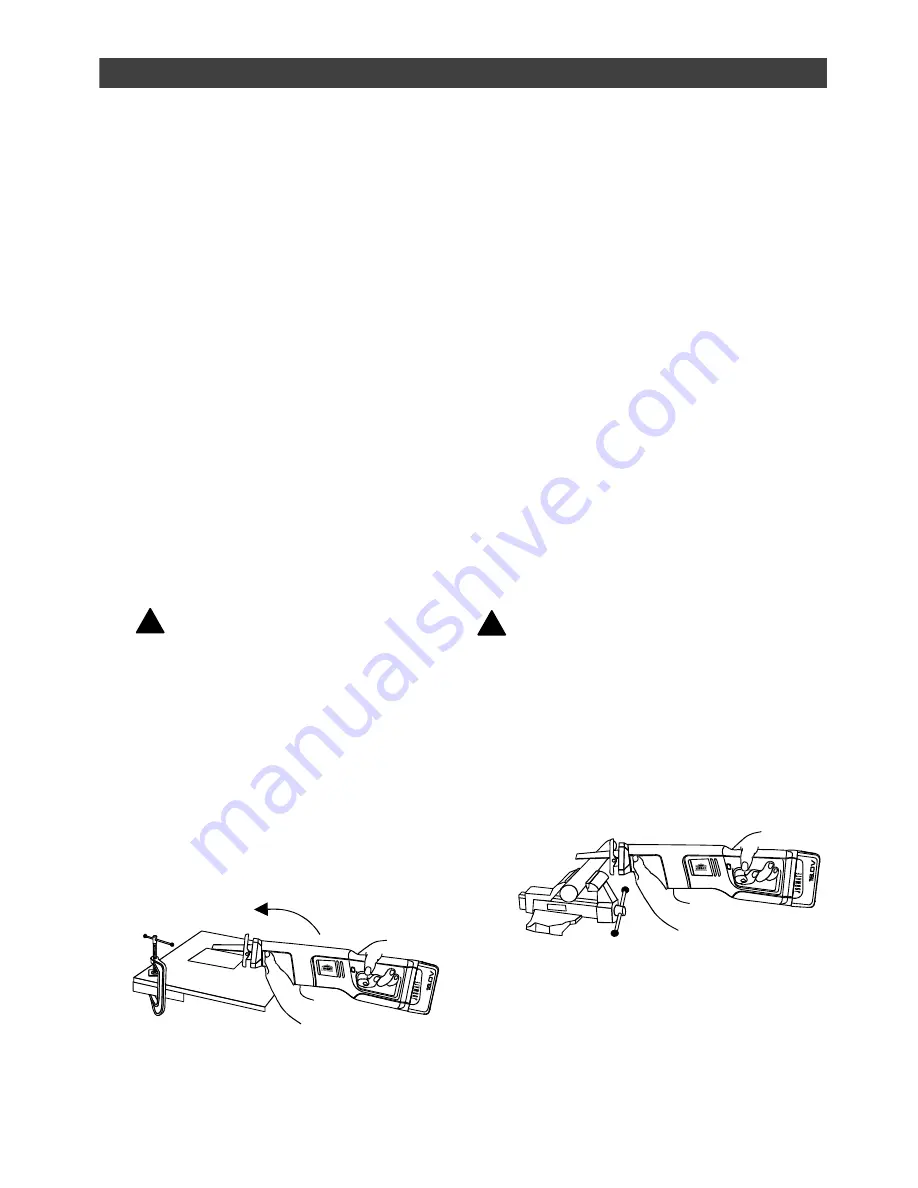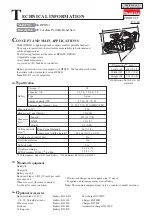
14
PLUNGE CUTTING
1. Clearly mark the workpiece to locate
the position of the cut.
2. Clamp the workpiece to a work bench
or table (Fig. 6).
NOTE:
Make sure the area to be cut is
clear under the workpiece so that the
blade will not come into contact with
anything other than the workpiece.
3. Select a convenient starting point in
the area to be cut out. Place the tip of
the blade over that point.
4. Rest the lower edge of the adjustable
pivoting shoe on the workpiece and
hold it firmly in that position.
5. Depress the lock-off button and
squeeze the trigger switch to start the
saw.
WARNING:
Make sure the
blade does not touch the workpiece
until the saw reaches full speed.
Loss of control and possible injury
could result.
6. With the saw running at full speed,
slowly tilt the saw until the tip of the
blade contacts the workpiece and
begins to cut. After the blade cuts
through the workpiece, tilt the saw
upward until the blade is perpendicular
to the workpiece.
METAL CUTTING
Metals such as pipe, steel rods, sheet
steel, aluminum, brass and copper can be
cut with your saw (Fig. 7).
●
To cut thin sheet material, “sandwich”
the material between hardboard or
plywood and clamp the layers to limit
vibration and material tearing.
●
Always use a fine tooth metal cutting
blade and run the saw at medium
speeds when cutting metal.
●
Use cutting oil to keep blade cool,
increase cutting action and prolong
blade life.
●
Do not twist or bend saw blade.
●
Do not force the saw blade. Let it cut
at its own speed.
DANGER:
a) Always clamp workpiece in a vise or
to a workbench or table. Do not
hold workpiece in your hand.
b) Never use gasoline as a lubricant or
as a cleaning agent. A spark from
the motor may cause an explosion.
Gasoline will also damage the
plastic components of the saw.
!
!
OPERATION
Fig. 6
Fig. 7





































